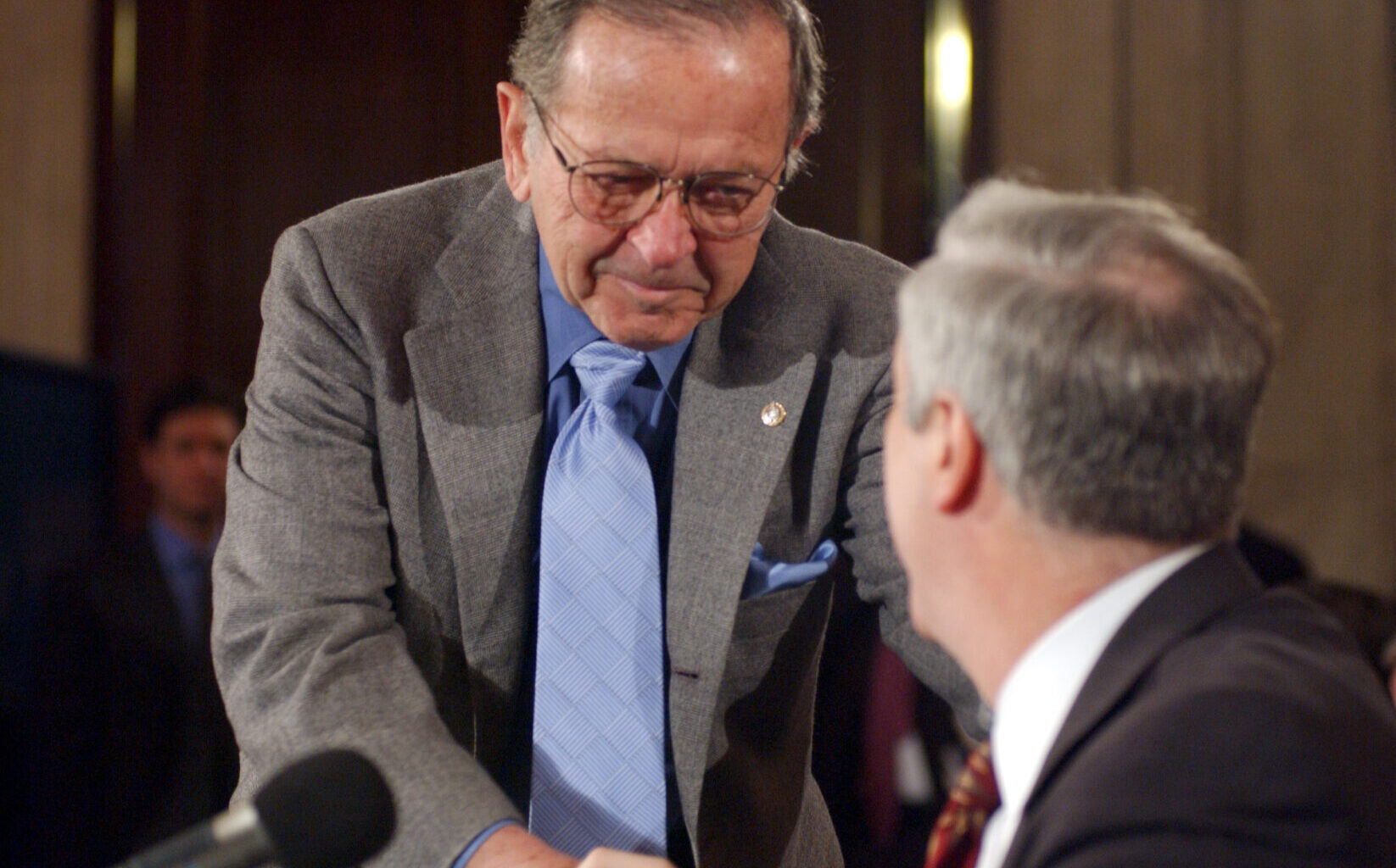The reinstatement of an oil and gas leasing program on the entire Coastal Plain of the Arctic National Wildlife Refuge fulfills a requirement in the recently enacted reconciliation law, but the highly contentious fight over drilling in the northeast corner of Alaska goes back almost half a century.
The Interior Department announced Thursday it was making the entire 1.56 million-acre Coastal Plain of ANWR available for oil and gas leasing, implementing a provision in the July reconciliation package that calls for at least four lease sales in ANWR in the next 10 years.
That action expands a decision late in President Joe Biden’s administration to open 400,000 acres of ANWR land to lease sales, the minimum area mandated under the 2017 tax law, enacted in President Donald Trump’s first term.
“From day one, President Trump directed us to unlock Alaska’s energy and resource potential while honoring commitments to the state and local communities,” Interior Secretary Doug Burgum said Thursday. “By reopening the Coastal Plain and advancing key infrastructure, we are strengthening energy independence, creating jobs and supporting Alaska’s communities while driving economic growth across the state.”
The department also said it would reissue right-of-way permitting for the Ambler Road project to help spur development in the mineral-rich Ambler mining district and exchange lands to allow for a new road connection between the Alaska community of King Cove and the Cold Bay airport.
In addition, DOI’s Bureau of Land Management’s Alaska State Office announced this week that it is starting the process for upcoming oil and gas lease sale in the National Petroleum Reserve in Alaska. BLM says this would be the first lease sale for the reserve since 2019 and follows a provision in the July reconciliation law that reinstated the NPR-A leasing program and requires six lease sales be conducted over the next 10 years.
Long fight over ANWR
The ANWR drilling debate began in 1960, when Congress established what was then called the Arctic National Wildlife Range.
But oil and gas exploration was not banned until 1980, when President Jimmy Carter signed legislation that expanded and renamed the area as a 19 million-acre refuge. The law left open an option for future Congresses to permit energy development on a 1.5 million-acre portion of the Coastal Plain.
Congressional proponents tried repeatedly to pass legislation to allow oil and gas drilling on the Coastal Plain, but each attempt either died on the floor or through a president’s veto pen.
The closest the effort came to success was in the early 2000s. President George W. Bush had included energy exploration in ANWR as a cornerstone of his energy policy blueprint, and Alaska drilling supporters saw an opportunity to bring to fruition decades of work on the issue.
In March 2005, the Senate rejected, 49-51, an amendment to strip from the chamber’s fiscal 2006 budget resolution language that assumed $2.5 billion in ANWR leasing revenues. Once the budget resolution assumed the savings from ANWR, the language in a subsequent budget reconciliation bill would be protected from filibuster.
For drilling advocates, especially Sen. Ted Stevens, R-Alaska, that vote marked a potential turning point in the 25-year debate.
Republicans held the line again in early November, rejecting an amendment that would have deleted the ANWR provision from that fiscal year’s reconciliation bill. That vote and another adopting an amendment barring export of any oil or natural gas produced in the refuge seemed to seal the deal.
But then a group of moderate Republicans stripped the language from the House version of the reconciliation bill, and it was excluded from the final package.
That set up a third showdown, when Stevens inserted the ANWR language into the House-Senate conference agreement on the must-pass fiscal 2006 Defense appropriations bill. Stevens linked the ANWR provision to money for hurricane relief and energy assistance for the poor.
Still, the Senate fell short of the 60 votes needed to end a filibuster of the Defense spending measure, and GOP leaders conceded that the ANWR language had to be removed so the spending bill could be cleared and sent to the president.
An embittered Stevens, who devoted most of his four decades in the Senate to opening part of the refuge to development, railed against his opponents and vowed to fight on.
“This has been the saddest day of my life,” said Stevens, who was defeated for reelection in 2008 and later died in a 2010 plane crash.
ANWR drilling boosters, including then-Senate Energy and Natural Resources Chairman Pete V. Domenici, R-N.M., promised to renew their efforts to pass an ANWR development bill in 2006, but the issue never got the same traction until a decade later.
With Trump’s first election in 2016, ANWR got a new lease on life, so to speak. Proponents on Capitol Hill, chiefly Sen. Lisa Murkowski, R-Alaska — then chair of the Energy and Natural Resources Committee — successfully attached language to the Trump tax overhaul package the following year. It passed muster under strict budget reconciliation rules since it was estimated to generate revenue for the federal government.
However, Alaska lease sales required under the 2017 tax law were canceled by the Biden administration starting in 2021, citing legal flaws in the way the Trump administration had conducted the sales — though late in Biden’s term, his administration conducted sales to meet the minimum mandate.
Biden’s Interior Department also established drilling protections on millions of acres of land of the National Petroleum Reserve in Alaska.
That all came undone with Trump’s second presidential election, and what backers dubbed the “big, beautiful” reconciliation package this summer.
